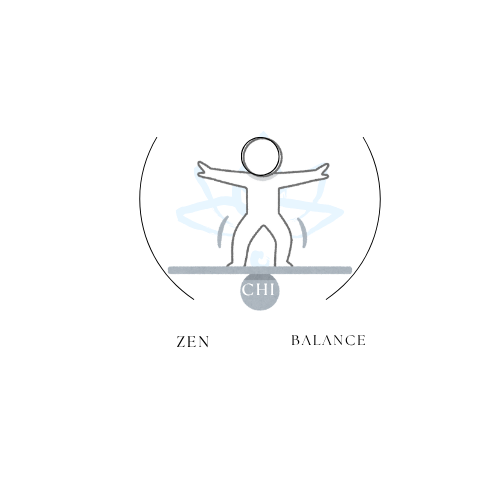
Mindfulness for Busy People Small Shifts Big Calm
Share
Updated on: 2025-10-20
Table of Contents
- 1. Mindfulness for Present-Moment Awareness and Everyday Ease
- 1.1 What is mindfulness and how do I practice it?
- 1.2 Present-moment awareness vs. distraction
- 2. Mindfulness Myths vs. Facts
- 3. Step-by-Step Guide to Mindfulness Practice
- 4. Mindfulness Techniques and Exercises for Anxiety and Calm
- 5. Mindful Awareness in Daily Routines
- 6. Mindfulness Frequently Asked Questions
- 7. Mindfulness Summary & Key Takeaways
Mindfulness can feel reassuring because it invites a calm return to the here and now. If you are new to mindful awareness, this guide offers a friendly, step-by-step path you can tailor to your life. You will also find simple mindfulness exercises for anxiety and stress, plus gentle options for days when focus is hard. If you wish to explore more supportive reading, you are welcome to visit our Blog or learn more about us at About.
Mindfulness for Present-Moment Awareness and Everyday Ease
At its core, mindfulness is the practice of paying kind attention to your experience. It encourages present-moment awareness without judgment. You might notice your breath, your posture, or a small sound in the room. These simple observations help the mind settle. Over time, many people find that mindful awareness supports clearer decisions, steadier attention, and a more compassionate inner tone.
Mindfulness can be explored through meditation, everyday activities, or short pauses that fit into a busy day. A well-known approach called mindfulness-based stress reduction offers a structured way to learn, and you can also start on your own with brief daily moments. You do not need special equipment; a quiet minute and a caring attitude are enough to begin.
What is mindfulness and how do I practice it?
Mindfulness is paying attention to the present with openness and curiosity. To practice, choose a focus—often the breath or a simple daily task—and notice details gently. When your mind wanders, you may acknowledge the distraction and return to your focus with kindness. Short, consistent practice often feels more sustainable than long sessions. If helpful, set a soft reminder to pause for a minute in the morning, midday, and evening.
Present-moment awareness vs. distraction
Distraction is natural and human. Mindfulness does not push distractions away. Instead, it gives them a friendly nod and returns attention to what is here now. This gentle pattern—notice, name, return—can be applied to breathing, walking, eating, or listening. It offers a steady rhythm that supports ease.
Mindfulness Myths vs. Facts
- Myth: Mindfulness means having no thoughts. Fact: Thoughts will come and go. Mindfulness invites a kinder relationship with them.
- Myth: You must sit perfectly still for a long time. Fact: Short practices, gentle movement, and everyday moments can be mindful.
- Myth: Mindful awareness is only meditation. Fact: Meditation is one way; mindful walking, breathing, and noticing sensations also count.
- Myth: You need special tools or a quiet room. Fact: A small pause and attentive presence are enough.
- Myth: Mindfulness requires certain beliefs. Fact: It is a simple attention skill that people from many backgrounds find useful.
- Myth: Progress must be fast. Fact: Gentle, steady practice supports learning at your own pace.
Step-by-Step Guide to Mindfulness Practice
This section offers a simple, flexible sequence you can adapt. Please listen to your body and comfort level, and feel free to keep sessions brief if that feels supportive.
- Set a kind intention (10–20 seconds). Choose a quiet moment. Silently note, “I am practicing mindfulness to be present.” This sets a friendly tone.
- Find a steady posture (20–30 seconds). Sit or stand with ease. Let your spine lengthen gently and relax your shoulders. Comfort matters more than form.
- Choose your anchor (1–2 minutes). Common anchors include the breath, sounds, or touch points like feet on the floor. Notice a few details—coolness, warmth, or rhythm.
- Notice and name (1–3 minutes). When a thought or feeling arises, acknowledge it softly: “thinking,” “planning,” or “feeling.” Then return to your anchor.
- Widen awareness (1–2 minutes). Gently include more of your experience: posture, facial muscles, hands, and environment. Maintain a curious, open stance.
- Close with gratitude (10–20 seconds). Thank yourself for practicing. Note one small benefit you observed, such as a slower breath or a steadier mood.
These steps reflect mindfulness techniques for beginners and can be paired with brief meditation sessions. If you prefer a structured path, a program like mindfulness-based stress reduction offers gradual learning and guided practice. You may find it helpful to read a short guide on our Home page and return to these steps when you have a spare minute.
Mindfulness Techniques and Exercises for Anxiety and Calm
During tense moments, gentle, short practices can feel more approachable. The exercises below are simple invitations to tune into present-moment awareness with care. This content is educational and for general information only.
- 30-second breath check. Place a hand on your abdomen. Notice three relaxed breaths. If helpful, lengthen the exhale slightly. Let the shoulders drop.
- 5-4-3-2-1 sensory scan. Look around and note five things you see, four you feel, three you hear, two you smell, and one you taste. Move at a calm pace.
- Foot-ground connection. Stand or sit. Feel your heels, balls of the feet, and toes. Notice pressure, temperature, and contact with the floor.
- Label and let be. When a strong emotion arises, you may label it gently—“tightness,” “worry,” “heat.” Allow it to be present without analysis for a few breaths.
- Object focus. Choose a nearby object—a cup, leaf, or book. Observe texture, weight, color, and edges for one quiet minute.
- Soft gaze breathing. Let your gaze rest on a point ahead. Inhale with ease; exhale with a slower count. Continue for five calm breaths.
These mindfulness exercises for anxiety are short and flexible. Many people prefer to start with one practice and repeat it at the same time each day. If you like, explore more supportive articles on our Blog.
Mindful Awareness in Daily Routines
Mindfulness does not need extra time in your schedule. You can weave it into what you already do. The goal is not perfection; it is a gentle return to the present.
- Mindful sipping. With your next drink, notice temperature, aroma, first sip, and aftertaste. Pause between sips.
- Single-tasking minutes. Choose one daily task—washing hands, opening a window, or tying shoes—and do it with full attention once a day.
- Kind transitions. Before starting a meeting or a call, take one slow breath and relax your jaw, neck, and shoulders.
- Walking awareness. During a short walk, feel your steps, the sway in your arms, and air on your skin. Name three things you notice.
- Listening practice. When someone speaks, listen to their words and tone. Pause for a breath before replying.
If you prefer guidance, you can learn more about our approach on the About page or reach out with a question on Contact.
Mindfulness Frequently Asked Questions
What is mindfulness and how do I practice it?
Mindfulness is a friendly way of paying attention to the present. You can practice by choosing an anchor—often the breath—and noticing it for a minute or two. When your attention drifts, acknowledge that gently and return to your anchor. Short, regular moments can be a kind starting point.
How does mindfulness help reduce stress and anxiety?
Mindfulness encourages awareness of thoughts, sensations, and feelings without rushing to fix them. Many people find that this calmer noticing creates space for steadier choices and a softer inner voice. It may support a sense of balance during challenging moments. Please choose what feels appropriate for you and seek personalized support if needed.
Is meditation the same as mindfulness?
Meditation is one way to practice mindfulness, but it is not the only way. You can also cultivate mindful awareness while walking, eating, or listening. The common thread is present-moment attention with a non-judgmental, compassionate attitude.
How long should I practice each day?
Many people begin with one to three minutes and build gradually. Consistency often feels more helpful than duration. If a timer feels stressful, try linking your practice to daily cues, such as after brushing your teeth or before opening your laptop.
Mindfulness Summary & Key Takeaways
- Mindfulness is a gentle skill that emphasizes present-moment awareness and kind attention.
- Simple, consistent practice—breath, posture, or sensory noticing—often feels sustainable.
- Myths are common; you do not need to stop thoughts or sit perfectly to benefit from practice.
- Mindfulness techniques for beginners and short exercises can support calmer moments, including times of anxiety.
- Mindfulness-based stress reduction and brief meditation sessions offer structured options if desired.
- Weaving mindful awareness into routine activities is a practical way to grow the habit.
- If you would like friendly resources and ideas, you may explore our Blog or connect through Contact.

I'm a passionate curator at Zen Chi Balance, dedicated to spreading calm, harmony, and mindful living through faith-inspired lifestyle products. I help craft meaningful experiences for our global community of mindful shoppers.
The content provided is for informational and inspirational purposes only. It is intended to encourage personal growth, mindfulness, and balance in daily life. Zen Chi Balance does not provide medical, legal, or professional advice. For specific concerns or guidance, please consult a qualified professional. Visit us at www.zenchibalance.com for more inspiration and resources.
